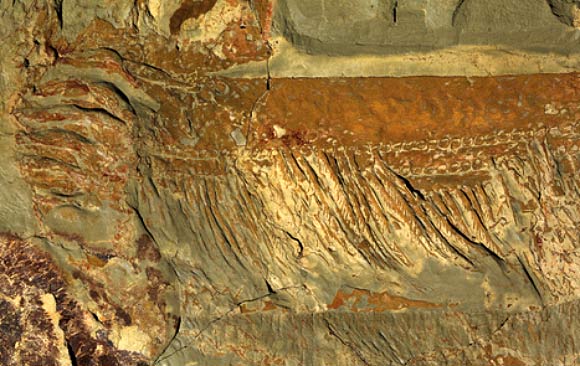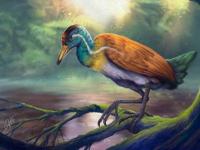Aegirocassis benmoulae: The Human-Sized ‘Lobster’ who Lived on Earth 480 MYA

Paleontologists have discovered fossils of a 2-m-long lobster-like animal that lived in the seas of what is now Morocco during the early Ordovician period, about 480 million years ago.
The newly-discovered animal, named Aegirocassis benmoulae in honor of the Moroccan fossil hunter Mohamed Ben Moula who discovered the fossils, belongs to the extinct family Anomalocarididae (or anomalocaridids), which first appeared 520 million years ago.
This marine monster attained a size of at least 7 feet (2 m), ranking it among the biggest arthropods that ever lived.
“This would have been one of the largest animals alive at the time,” said Dr Allison Daley of Oxford University, who is a co-author of the paper published in the journal Nature.
“Aegirocassis benmoulae is a truly remarkable looking creature,” added co-author Dr Derek Briggs of the Yale Peabody Museum of Natural History and the Yale University’s Department of Geology and Geophysics.
While most anomalocaridids were apex predators, similar to present-day sharks that hunt other animals for food, Aegirocassis benmoulae is more like present-day whales, which filter seawater to find their food.
“These animals are filling an ecological role that hadn’t previously been filled by any other animal,” Dr Daley said.
“While filter feeding is probably one of the oldest ways for animals to find food, previous filter feeders were smaller, and usually attached to the sea-floor.”
“We have found the oldest example of gigantism in a freely swimming filter feeder.”
Lead author Dr Peter Van Roy of Yale University added: “giant filter-feeding sharks and whales arose at the time of a major plankton radiation, and Aegirocassis benmoulae represents a much, much older example of this trend.”

Dr Van Roy excavated an exceptionally well-preserved 3D fossil of the new species. Most previous anomalocaridid fossils were flat, like a dried leaf pressed within the pages of a book.
“Without these 3D remains, we may never have got the insight into these animals’ anatomy that we did,” Dr Daley said.
Aegirocassis benmoulae had two pairs of swim flaps per body segment, rather than the one pair found in previous anomalocaridid fossils.
The paleontologists show that the two pairs of swim flaps correspond the two branches of the double branched legs found in present-day arthropods, but at a stage before they fused together into one leg.
“We were excited to discover that it shows features that have not been observed in older Cambrian anomalocaridids – not one but two sets of swimming flaps along the trunk, representing a stage in the evolution of the two-branched limb, characteristic of modern arthropods such as shrimps,” Dr Briggs said.
_____
Peter Van Roy et al. Anomalocaridid trunk limb homology revealed by a giant filter-feeder with paired flaps. Nature, published online March 11, 2015; doi: 10.1038/nature14256
Source: www.sci-news.com








